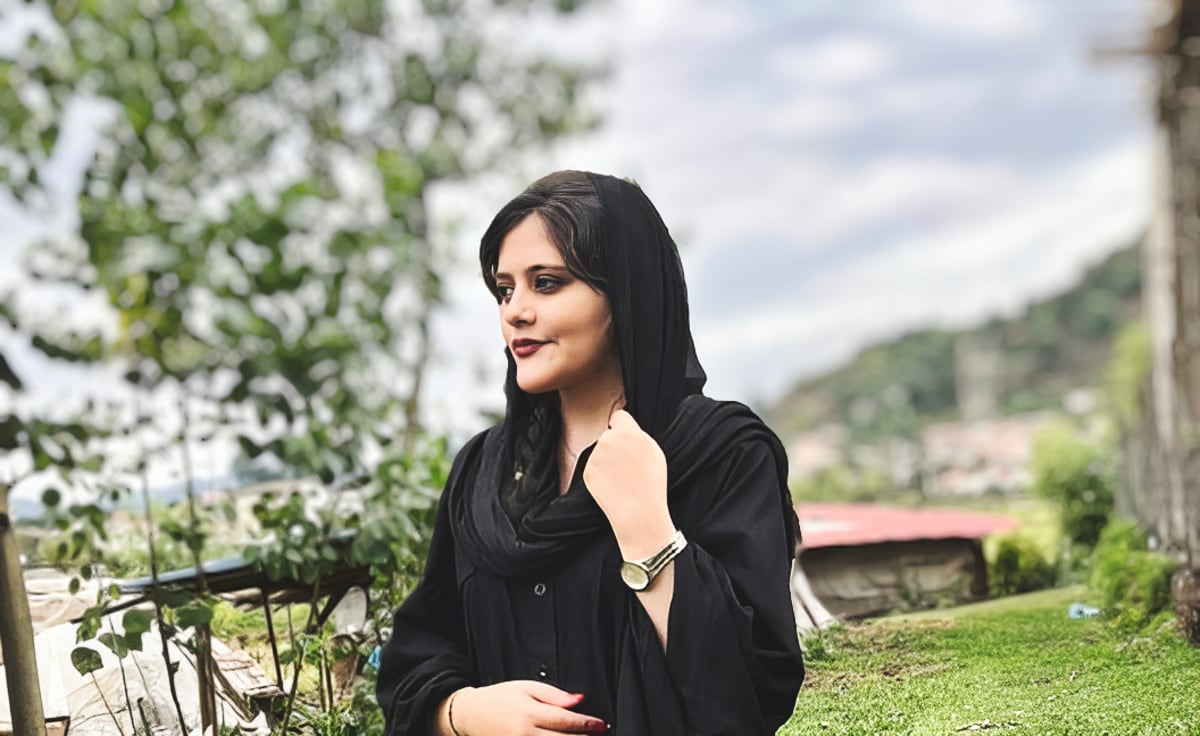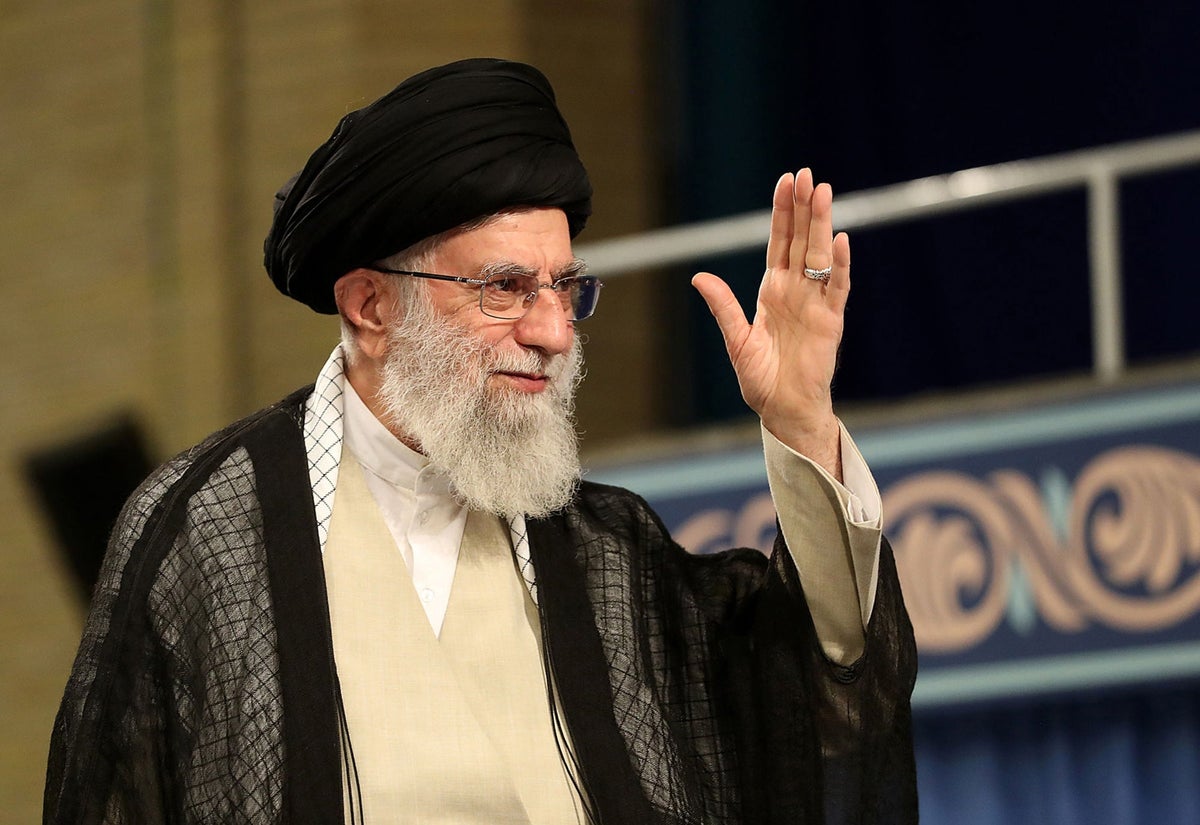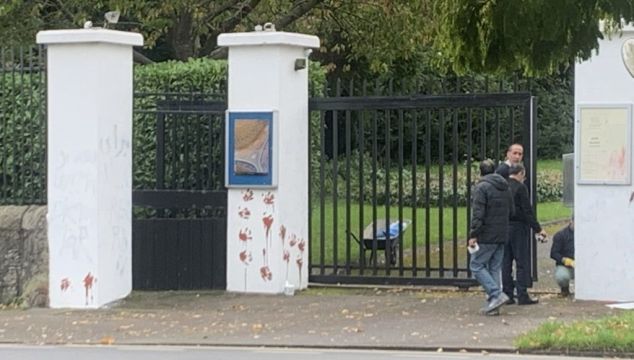- Culture
- 17 Oct 22
Iranian Protests: Organised Religion is Killing Women

As anti-hijab protests rage on throughout Iran, claiming more and more lives every day, an examination of the effects of organised religion on the female population is worthy of an investigation.
On September 16th, Iranian woman Mahsa Amini was brutally murdered in police custody. She died in a hospital in Tehran, the capital of Iran.
The murder has lit a fuse amongst young Iranian women, who have been demonstrating peacefully in protest at the murder of the 22-year-old – and for women's rights in the Islamic Republic of Iran – ever since.
Misogyny is at the heart of this brutally tragic story.
Mahsa Amini was arrested by the morality police in Iran for refusing to properly cover her hair or wear a hijab. The mandatory wearing of a hijab came into law in Iran after the revolution in 1979. There have been many protests against this over the intervening years, but none quite as powerful as what is happening now.
 Mahsa Amini died at 22-years-old
Mahsa Amini died at 22-years-oldEyewitnesses say that Amini was badly beaten in a police van after being taken into custody. They say that blood was seen coming out of her ear and from head wounds. Iranian forces deny this, but not many people see their denials as credible.
BLACK BAGGY PANTS
At the funeral of Mahsa Amini, some women removed their hijabs as a sign of solidarity. It was the beginning of a wave of protests. These were initially met with violence by Iranian police. However, the use of force has not quelled the indignation of an increasing number of Iranian women. It is just possible that there is a reckoning on the way.
Since the funeral, women have been protesting more widely by removing their hijabs, burning them and cutting their hair off.
The Iranian government has attempted to cut internet access across Iran, in a ploy to deny people access to what's actually happening in the country. Within days it is said that 300 protests broke out. The press has not been truly free in Iran for a long time – but since the protests began there has been a crackdown on freedom of the press, with journalists and the media relying heavily on first-hand accounts and videos posted online as a result.
 Protesters around the world are standing in solidarity with Iranian women following Mahsa Amini's death. (Reuters: Murad Sezer)
Protesters around the world are standing in solidarity with Iranian women following Mahsa Amini's death. (Reuters: Murad Sezer)Sickeningly, there have been further casualties.
Last week, the family of Nika Shakarami found the 17-year-old's body in a morgue, weeks after they had reported her missing.
Nika’s aunt told BBC Persian that the teenager left the house on September 20 with a water bottle in her bag. She had said that she was going to visit her sister. The family later realised that she was intending to join the anti-hijab protest and, most likely, took the water to rinse tear gas from her eyes.
Shakarami did join the protest and burned her headscarf.
According to a friend who was with her at the protest, she was followed by security forces. Her aunt, Atash Shakarami, explained that Nika's family lost contact with the 17-year-old around 7pm on September 20. The young girl's Instagram and Telegram accounts were deleted that night, as is common, when security forces demand that detainees give them access to their social media accounts.
The Shakarami family filed a missing persons report, while also searching for Nika in hospitals and police stations. They heard nothing until 10 days later, when they found her body in a morgue.
When identifying her, Atash Shakarami said that the family were only allowed to see her face for a few seconds and not the rest of her body.
In a context where journalists are increasingly under threat, it is hard to definitively establish the facts of the case. To avoid protests the authorities apparently at first agreed to release the body on the condition that the funeral would remain private. Some reports suggest that they let the family bring Nika's remains to her father's hometown, before then snatching Shakarami’s body and burying her in a village about 25 miles away.
The family have accused the Government of stealing her body, carrying out a secret burial and pressurising relatives to make false statements about how she died. It's also been rumoured that the 17-year-old was beaten and raped to death, with her organs being harvested after her killing.
Despite the self-evident danger she was placing herself in, Atash Shakarami shared news of the teen’s disappearance on social media. Soon, her story began to circulate online and gain widespread attention in Iran. A video of Shakarami singing a Persian love song while laughing and dressed in black baggy pants, a black T-shirt, and short jet-black hair-cut went viral.
In loving memory of the heroic girls in Iran who paid the ultimate price for a nation’s freedom. We will always remember and never forget. #InternationalDayOfTheGirl #MahsaAmini #NikaShakarami #SarinaEsmailzadeh pic.twitter.com/bjmc4W72xa
— Dr. Nina Ansary (@drninaansary) October 11, 2022
Nika's aunt was subsequently arrested and –according to reports – forced to lie about the circumstances surrounding her death. But even that was not enough to quell the rising anger...
PERFECTLY HEALTHY
It was only after the video of Nika Shakarami singing a Persian love song went viral that the Iranian authorities finally commented on Shakarami’s death. They claimed that the young girl's body was found on September 21 in the back yard of a building. They claimed Nika had fallen to her death.
According to Tasnim News, authorities also said they had arrested eight workers who were, allegedly, at the building when Nika died.
Tasnim news agency is close to the Islamic Revolutionary Guard Corp, whose police force, the Basij, have played a key role in the crackdown on protesters. Fars News, also IRGC-affiliated, released video footage on Wednesday, apparently showing Shakarami entering the building – though, in truth, the person in the video is not really identifiable.
Also on Wednesday, State television aired footage of Shakarami’s aunt corroborating the government's narrative, apparently agreeing that Nika fell from the top of the building. Nika's uncle also appeared, criticising the protests. As he spoke, a shadow appeared in frame, with someone seeming to whisper – though this is impossible to confirm – “Say it, you scumbag," in Persian.
According to rights groups and activists, Iran’s government has previously made use of forced confessions.
On Thursday, Shakarami’s mother told the Persian arm of US-funded Radio Free Europe/Radio Liberty, Radio Farda, that she was also being intimidated. “They killed my daughter, and now they are threatening me into a forced confession,” she said.
Following Nika's death, reports have also emerged of the death of a 16-year-old Iranian girl, Sarina Esmailzadeh. Sarina was allegedly beaten to death at the anti-hijab protests.
The 16-year-old Youtube v-logger died when – according to Amnesty International – security forces beat her with batons at a protest in Gohardasht in Alborz province on September 23.
A statement by Amnesty International cited a primary source, claiming that Esmailzadeh’s family had been subjected to “intense harassment to coerce them into silence.” Inevitably, these claims have been denied by Iranian officials.
As news of Esmailzadeh’s death spread across social media, Iran’s Isna news agency quoted the chief justice of Alborz province as saying that a preliminary investigation showed the teenager’s death was suicide. He claimed that Esmailzadeh had a history of mental health problems and that she jumped from the roof of a five-storey building.
The story of Sarina Esmailzadeh reached me this morning, I'm somewhat at a loss for words. We talk about freedoms with no understanding of what it means to pay the ultimate price in fighting for it. This brave girl was only 16 years in the world... https://t.co/I2d4J6WMak
— Hozier (@Hozier) October 7, 2022
Nika Shakarami's mother has also said that authorities have attempted to coerce her into saying her daughter died by suicide.
On Friday last, October 14 2022, the Irna news agency reported the results of an Iranian coroner’s report into the death of Mahsa Amini. It claimed that the cause of the death of the 22-year-old woman – which started this wave of protests – was not blows to the head and limbs, but rather multiple organ failure caused by cerebral hypoxia after she fell while in custody, due to “underlying diseases."
Amini's family have clarified that Mahsa was perfectly healthy with no underlying medical conditions before her death.
THEY HAVE NO SHAME
To understand the vicious aggression employed against peaceful protesters, and the forced cover-ups, we first have to look at the leadership of the Islamic Republic of Iran.
The overall head of state in Iran is Ayatollah Ali Khamenei, the country's supreme leader since 1989. The supreme leader is Head of State and commander-in-chief of the army, with authority over the national police and the morality police.
The top elected official is President Ebrahim Raisi. The President's responsibilities include the day-to-day running of the government, and he also has significant influence over domestic policy. Indeed, the president's interior ministry runs the national police force – the group that have been cracking down on protests. However, the commander of the national police force is appointed by the Supreme Leader and is directly answerable to him. And it is the same with the commander of both the Islamic Revolution Guard Corps and the Basij.
It is Khamenei, therefore, who wields most power over how to deal with the protestors.
 Ayatollah Ali Khamenei
Ayatollah Ali KhameneiDespite Iran being titled a 'republic', the reality is that it is closer to a dictatorship. This detail is not lost on the female protestors, who have been chanting "death to the dictator" - starting at Mahsa Amini's funeral.
With Ayatollah Ali Khamenei as Supreme Leader, Islamic law is very strictly enforced.
In many ways the regime in Iran is a more extreme version of a by-gone era in Ireland, when Catholicism ruled – one in which unwed mothers were forced into into Magdalene Laundries and work houses, with babies being snatched from their parents against their will. The Church – and legislators who slavishly followed their diktats – banned contraception, and refused to let women think or act for themselves. It also covered up child abuse and sexual violence carried out by priests and so called Christian Brothers.
The key element, therefore, that we see in countries where organised religion is at the centre of things, is a lack of freedom for women, especially in relation to sexuality.
It seems obvious, then, that Iran falls a long way short of offering basic human rights to anyone outside the category of straight cisgender man. It seems rather bizarre, then, that Iran is a party to the International Convention on Civil and Political Rights, which – in theory at least – allows the people of Iran to protest and freely contest the government.
Minister for Foreign Affairs @simoncoveney has issued a statement on recent events in Iran.
Read more 👉 https://t.co/Qsqh2D31nL pic.twitter.com/6P7wvNapxr— Irish Foreign Ministry (@dfatirl) October 3, 2022
This was pointed out in a statement issued last week by the Irish Foreign Affairs and Defence Minister, Simon Coveney.
"I join many of my EU colleagues in condemning the disproportionate and unjustifiable response of the Iranian internal security apparatus to peaceful protests against the death in custody of Mahsa Amini," Minister Coveney said. "I also urge the Iranian authorities to conduct a full and transparent enquiry into Ms. Amini’s death.
"Ireland puts gender issues and the empowerment of women and girls at the forefront of our foreign policy and we will continue to champion these issues in our dialogue with international partners and during our tenure on the UN Security Council.
"Iran has signed the Universal Declaration of Human Rights and adopted the Beijing Declaration and Platform for Action which, inter alia, commits Iran to ensure the full implementation of the human rights of women and of the girl child as an inalienable, integral and indivisible part of all human rights and fundamental freedoms.
"I also remind the Iranian Government that Iran is a party to the International Convention on Civil and Political Rights, which enshrines the fundamental rights of freedom of assembly and speech. The disproportionate use of force against peaceful protests and the decision to severely restrict access to the internet is a breach of those fundamental rights."
It's clear, however, from a statement issued by the Iranian Embassy in Ireland that Iran is not heeding the warnings of foreign ministers – from Ireland or elsewhere.
 Iranian Embassy in Ireland defaced with graffiti of bloody handprints. Photo: Sharon Slater
Iranian Embassy in Ireland defaced with graffiti of bloody handprints. Photo: Sharon SlaterThe Iranian statement reads: "The tragic incident of Mahsa Amini's demise has grieved the entire nation and the government of Iran. Her death was a heart-breaking shock. Nevertheless, authorities at highest levels have responded professionally and responsibly undertaking a thorough investigation the result of which will be available soon.
"It is becoming increasingly evident that Mahsa's poignant death has been exploited for political purposes by the opponents of the Islamic Republic of Iran. They want to escalate an unfortunate incident and legitimate call for its proper investigation to prolonged turmoil and violent riot. Regrettably, the selective coverage of events on social media has contributed to the political manipulation of facts on the ground.
"Peaceful protests are protected in Iran by law and in practice. However, disruption of public order and endangering people's safety and security by violent acts of riot beget effective response by the police.
"For sure, civil demonstrations with legitimate political demands will continue to have their impact on the dynamic social life in Iran. However, foreign interference and incitement of violence will be thwarted."
As violence escalates and more female lives are taken in Iran, the risk increases. Can the women of Iran successfully take on the might of the Ayatollah and the State? That is what we must hope. But we must bear in mind that repressive regimes are willing to murder their own citizens.
This one has already shown that they have no shame whatsoever.
To donate or help Iranian women and protesters, visit the websites for the Centre for Human Rights in Iran, the Abdorrahman Boroumand Center, and Amnesty International - all organisations fighting for the rights and freedoms of all Iranian people.










